It’s called Pandanus and Screw Pine and a lot of other names. The question is which species?
Foraging classes this week were held in West Palm Beach, a hot Saturday afternoon and a not quite so hot Sunday morning. Both days made it into the humid 90s. Among the sights to see was a fruiting Pandanus. This palm-like tree with basketball-size fruit is tropical or potted as it is not able to take a freeze. There are some 600 species in the genus and several are edible in one way or another. One of the more interesting things about the Pandanus is how it burns. A dried Pandanus stalk can smolder for days like a baseball bat-sized cigarette. It was how the Aboriginals of Australia carried fire from one place to another.
As for the species in Dreher Park it certainly smelled delicious but without a solid identification sampling was beyond question. Three species are commonly known as edible: Pandamus amaryllifolius, which it probably was not, Pandanus fascicularis, a good possibility as is Pandanus tectorius. The latter is the most consumed of all and it would be a good find. I will just have to take more pictures next time and key it out. ‘Tis a mystery to be solved. I’ve been meaning to write an article about them having learned about them years ago from Ray Mears.
Elsewhere in the park the Coco-plums were just going out of season, the Simpson Stoppers had very ripe fruit — they were almost good — and the Sea-grapes were just coming into season. Though our local Yellow Pond Lilies (Nuphar) do not have edible roots they were putting on seed pods and amaranth was just going to seed as was crowfoot grass. Unfortunately the Mahoes were nearly past their blossoming season with just a few flowers here and there. They are an unusual blossom in that they are yellow in the morning then turn red in the afternoon. Botanist tell us that is to attract different pollinators. The blossoms also have more antioxidants in the afternoon. One other sighting of note was a bees’ nest in a concrete power pole. Usually ones sees them in Cypress or Live Oaks but this hive was quite happily living about 20 feet up the pole.
Upcoming classes this week are closer to home for me, Lake Woodruff National Wildlife Refuge on Saturday — learn what the Native American ate there — and Mead Garden in Winter Park a very well-stocked with weeds old city park. That is,. of course, if enough folks sign up. Always check the website and the classes page before heading out.
An Ivy Gourd grows near me. Not sure how it got here as it is a native of southern Asia and nearby islands. While Coccinia grandis is called Ivy Gourd becaues of white stripes it is also called Scarlet Gourd for its ripe color. The gourd is listed as an invasive species in Hawaii where it was imported as a food crop. It is supposed to be a pest in Australia, Texas and Florida though I’ve only spied one patch of it locally. USDA maps say it grows in two counties in Florida, Flager, which includes Daytona Beach, and Dade which includes Miami. I’m in south west Seminole County about 60 miles from Daytona Beach and just north of Orlando. So much for map accuracy. I’ve been pondering that well-established patch for a couple of years and was keen to learn how to get it grow. My attempt at seeds were not successful. Root sections of the plant grow vigorously. Sections of vine that include a node will also root, but not as quickly as the root. While it would survive as a potted plant in northern climes. If it can live in Daytona Beach — Zone 9b see below — which does have an occasional freeze then there are quite a few places it can live. To read more about the Ivy Gourd click here.
I dig it: For most of foraging history humans did not have shovels. Hands and perhaps feet were used for a long time to uproot tubers then along came the digging stick. Digging sticks vary greatly and perhaps so because of the task at hand. Usually they are short, hardwood sticks, often tempered in the fire. Sometimes they were curved and occasionally a second stick, a hunk of rock or a horn was involved such as with the Plateau Digging Stick, right. Today many foragers like to combine a walking stick with a digging stick. I have such a camelopard (hybrid.) It a long ash shovel handle that I beveled on the lower end. And on the top end I inserted a screw hook for pulling down branches and the like.
My “digging” stick is more designed for seasonal use when roots are my main foraging aim. At other times I carry a bent cement trowel in my backpack. I bought the six-inch trowel, put my torch to it, and bent the last two inches up a 45 degree angle. It a light, strong digging tool. I also painted the handle fluorescent orange to make it easier to find in the dirt. Many of my students like small folding hand spades and they work very well also. They’re light, sturdy, pack well and take up little room. To read about other possible items to use while foraging read Tools Of The Trail.
I have cognitive dissonance with global warming. In the several decades I have lived in Florida the winters have gotten colder, as measured by damage to my various garden and landscape plants. Yet, on average winter temperatures are warmer than they used to be by 2 degrees. Warmer average, cooler punctuations. But with anything climatic there is disagreement. The 1990 USDA map took the 70s into account which were very cool, the 2006 National Arbor Day Foundation map did not thus they disagreed on zone temperatures. The new 2012 USDA hardiness map however shows warmer temperatures are moving north.
I used to sit on the line between zones 9 and 10. Now I am solidly in 9b. That said my bananas do not survive the winters as well as they used to, my star fruit manages to survive the cool winter night but only because it’s 12 years old, and my mango — planted at the same time as the star fruit — never survived our warmer winters. My false roselle, prolific for a decade took several winter hits and died back. It is safe to say the jury is still out on all aspects of climate change. From a foraging point of view warmer winters might mean some Florida edibles moving slowly north and some wintertime weeds — such as chickweed — not moving a farther south, if not retreating north some.
If you ever read an accurate history of the Pilgrims who came to the New World in 1620 you will learn two things. The first is that nearly every piece of artwork about the Pilgrims around Halloween is complete wrong. They did not wear tall conical hats, and big buckles and white scarfs. Those were the Puritans who came arrived later. Pilgrims wore what ever they could find, a mishmash of clothes, and Pligrims used buttons. The Puritans considered buttons vain (what would they have thought about the zipper?) The other thing you will learn is that if it were not for pumpkins the Pilgrims may not have survived. It was the food that kept them alive. What is odd about the pumpkin is that it is not native to New England. It had to come from the south. Now days however, record pumpkins are grown in New England and Canada. The world’s largest pumpkin this year, and setting a new world record September 30th was grown by Ray Wallace of Greene, Rhode Island. It weighed in at 2009 pounds. Dat’s a lot a pies… More so, think of the Jack-O-Lantern one could make…
To donate to the Green Deane Newsletter click here.


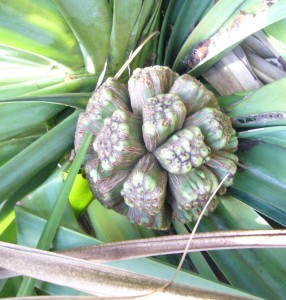
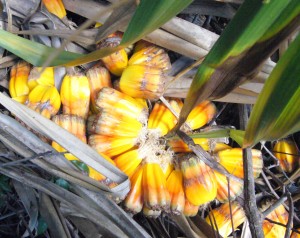
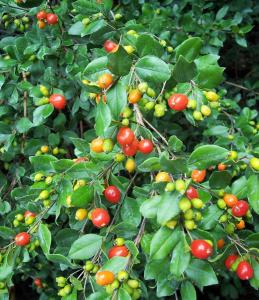
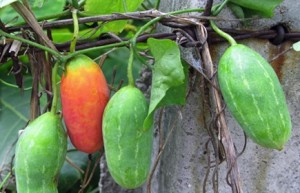
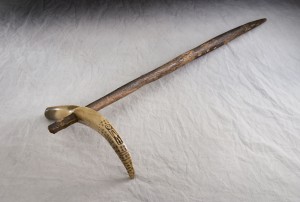
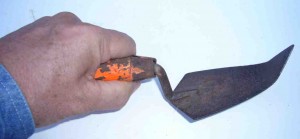
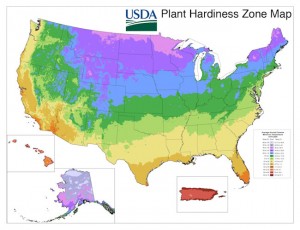
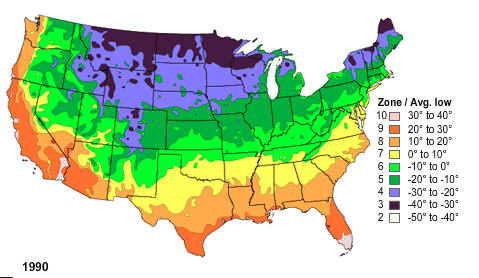
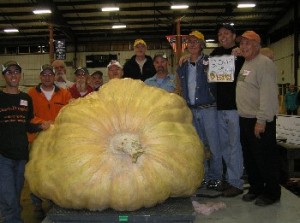

For myself there isn’t much question that global warming is happening – it’s the conclusion of every major scientific academy of the developed nations – and like all Geoscience subjects, it has many layers, and depending on where you live in the world, it’s not outwardly prevalent. The earth’s atmosphere churns like a fluid throughout the year and so there is a lot of noise that has to be accounted for – it’s not necessarily something be gleaned from observing a relatively small part of the world. On average the earth is heating up, it’s indicated even in the basic radiative physics of the CO2 molecule, and indeed it has been observed in satellite readings for many decades.
A main reason winters have seen severe cold snaps in FL (and much of the northern hemisphere) is because of the destabilization of the jet stream during our winters. The jet stream separates the warmer, tropical air in the south, from the colder, arctic air in the north. When the jet stream slows down, it becomes more loose and meandering. This allows cold air to slip down where normally it would not, makes thing more tumultuous, less reliable. It makes the potential for both record cold and record warmth. So, many areas of the US have seen record cold temperatures. Similarly, there have been many records for heat as well -2x as many for hot temps in much of the northern hemisphere.
It’s a big subject, and there’s a lot to learn. I understand mybe a few basic aspects of it.
Love the bit about Thanksgiving. I worked as a “Pilgrim” for 4 years on Plimoth Plantation. The first winter they didn’t eat much local food just mostly what they brought with them or could hunt (they stank at hunting save one Miles Standish) .they mostly got sick and died that winter. The next spring they planted the stolen corn and starved some more. Then the local tribe of Wampanoag indians took pity on them and traded for some of the local dried blueberries, some corn that they cooked like rice or what you would now think of as very very coarse grits and they did indeed eat alot of pumpkin but that wasn’t really till the second and third years that they had stewed pompion or pumpkin. after the third year they sort of got the hang of the corn crop and pumpkins and alot of native foods and that did indeed save their lives. A few myths busted, no cranberry sauce at the first thanksgiving (no sugar and cranberries were more thought of as medicine) lobster was most defiantly served (thought not fit for pigs to eat but hey, starving) along with venison (food of kings), turkey is questionable and certainly not featured but eagle was a fav of miles standish to eat. While there was no pumpkin pie (they had something closer to tarts rather than pie shells, cakes were more like sweetbread) , stewed pumpkin was almost certainly served along with cornbread (not how we have it, more like a corn grits mash dried out in an oven) dried blueberries were sometimes mixed in with the corn grits and it was steamed as a pudding and that was probably served. What is certain is that there was no beer, wine or aquavit. They only had a poor cup of water to serve. Tea was nearly unheard of at the time, coffee hadn’t made it up this far yet. A tisane (tea) was an herbal concoction that was for medicine. China tea was a drink for the elite and some italian traders. Cocoa was drunk by rich dutch merchants but not sweet like we have it now, mixed with wine and frothed a bit. The malic acid in sumac was drunk quite a bit as indian lemonade or sumac lemonade, the pilgrims looked down on this for the better part of a century. Smoked dried herring were in abundance and served at the first thanksgiving and deep fried onions around a pile of green beans was not (no cows = no dairy) and they had eaten up the cheeses that they brought with them along with everything else and the ship went home by this time. Another ship came and dropped off a bunch of poorly clothed starving men into the colony with no supplies for them and further depleted the supplies they had by taking some for the return trip. They did indeed wear poor clothing of whatever they could find, shoes were at a premium and they had holes in the sides to let out water but were unsuitable for the climate they were using them in and rotted very fast. In later years 1627 and forward they were in much better shape, they had figured out how to hunt, had a limited supply from england and holland, and had come to the conclusion that water would not kill you to drink if got from a spring. They also bent their stiff necks and ate some of the local food after growing the food from england and holand for a couple of years and it not working out so well. Indian spicebush was utilized pretty early on due to its tasting like all spice and them not having any spices left after the first winter (they held great store in hot spices driving out cold wet illnesses) They also used a local grass that tastes like garlic chives. By 1627 though they had managed to get the herb gardens behind each house going and planted more familiar herbs for the use in medicine, many of which escaped captivity and are all over america now. Plantain, chickweed, wormwood, valerian, several wild rose varieties, and many others. The peanut has the pleasure of making the fastest time around the world. In 50 years it made it out of the new world and to the far side of asia into the cusines of almost every poor malnourished country it entered (africa, thailand, china, southeast asia, morroco, north africa, India pretty much anyplace it would grow it made it to and was planted and used in a breathtaking variety of ways)
Fascinating holiday background, Susan…
Enjoyed reading this bit of history…
Re: pandanus. I have a bunch of pandanus seeds, and would like any information on how to propagate them. I have no idea what variety they are.
I very much enjoy Eat The Weeds. I am a forager. I also spend much time volunteering in Palm Beach County Natural Areas and much of that time removing invasive exoctics (I’ve done same in Hawaii). Please, please, don’t plant Coccinia grandis. The potential is there for it to become a big problem and it’s value as a food is just not worth the damage it could do to Florida.
Thanks
I too spend a lot of time removing exotics wherever I may be. My mother has 5 acres in Palm Beach County and I have 5 acres in Martin County.
thank you for the interesting articles.
I heard on Coast to Coast AM radio program that honey bees are being attacked by tiny brown flies, smaller than fruit flies. The larvae hatch out inside the bee and eat its insides from the abdomen up through the thorax and then the brain. They pop out of the bee as little flies, a bunch of them per bee after the bee is dead. As the bee gets sicker, it gets disoriented and flies out of the bee hive at night, dying underneath an electric light somewhere.
Near Live Oak Fl. …2 of last 4 years have been disatrous for my Satsuma Mandarins and other fruit trees. Not so much typical drops to low 20s/upper teens….but warm periods in between cold fronts where they tend to break dormancy…the sudden shock of 80s to 18! do damage and thwart spring bloom. Late freezes find trees in sappy springtime mode…all crazy.
being an australian i would like to add my two cents on aboriginies. i have seen fire made using sticks by some “bushcraft” experts, but I am not sure that this was the aboriginal way of doing it. however i can tell you that in school i was taught that mainland aboriginies could make fire, and tasmanian aboriginies couldn’t. tasmanian aboriginies had to either get it off a neighbouring tribe, or wait for a lightning strike/bushfire/whatever to create some.
i was directly next to a bushfire in Northern Territory and a dry pandanus’ leaves went up instantaneously. it happened so fast that like grass fires the trunk was only externally charred. this was a controlled burn that the park crew said i should just sidestep. the smoke and heat helped me do that alright.
i also read that in the quest for fire, the pandanus log was a good vehicle, used by aborigines.
aborigines also favored the digging stick. it was women’s work!
I’ve spent most the evening online searching for an edible fruit found at Ritta (Lake Harbor area) Florida in 1918. I’m writing an historical young reader and realized that wild strawberries weren’t an option. I thought of Florida cherries, but they weren’t found until 1930ish. I would be so grateful if you could provide names of edible fruit–preferably small for picking–that were on the south shore of Lake Okeechobee in 1918. Thanks for your time.
Do you mean commercial or wild? There would have been scattered blueberry plants. A few here, a few there, not in colonies like up north where they can cover fields. Here you find one or two plants, then over there one or two. And they are picky in the soil they like, acidic which is difficult to find in limestone florida. You find them on woodroads and paths under oaks and pines (which add acid to the soil.) More rare but occasional would be huckleberries, a clse blueberry relative.
They also would have picked abundant beautyberries for jelly (Calicarpa americana) and used the leaves to keep the insects away. I have articles on all three.
I’m looking for wild/native Florida fruit plants in 1918 to use in my young reader book. Since reading more after my previous comment, I’m wondering about using gopher apples or loquats.
Thank you for your informative reply–I’m off to read the article on beautyberries and check your class schedule. Thanks for your time.
Loquats were in the US before 1879 and in Florida before 1887 so they could have been picking them, perhaps as a recent fruit. Gopher apples are native but a bit more of a problem. They’re not common in that area of Florida but are there. They like high, dry, scrubby areas. The problem with them are many. First the woodland creatures love them so finding them even when abundant can be an issue. I didn’t see one for nine years of looking. Also they don’t travel well and don’t store at all. ALso growing them from seed is almost impossible.